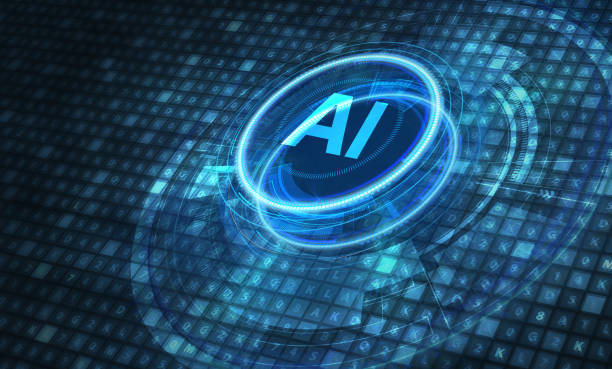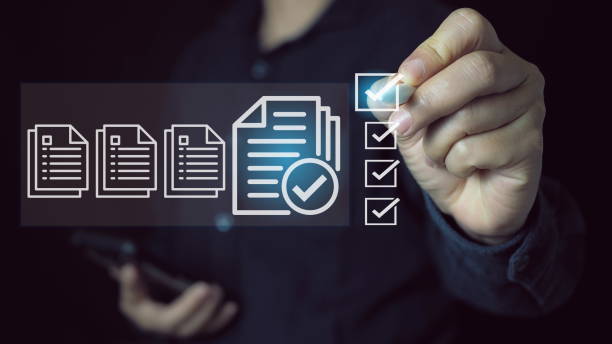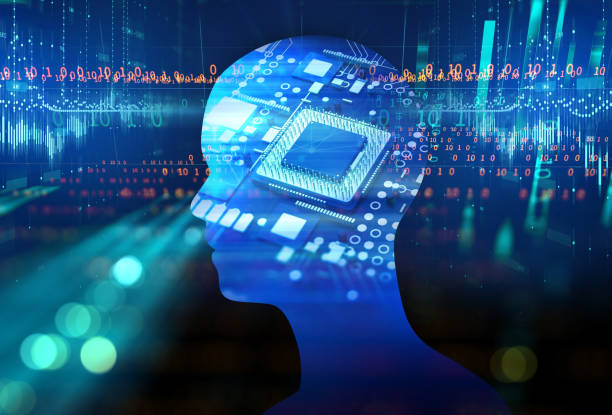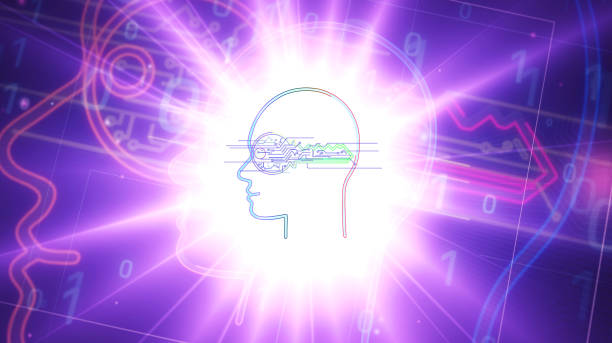Introduction to AI Robots and Basic Concepts
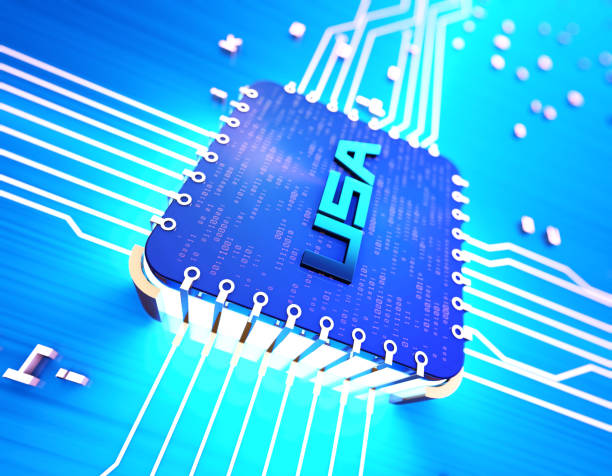
In today’s world, the term #AI_Robot is increasingly heard.
But what exactly is an #AI robot? Simply put, an #AI robot is a combination of two separate fields: robotics and artificial intelligence.
Robotics deals with the construction, design, operation, and application of robots, while artificial intelligence (AI) refers to the development of computer systems that are capable of performing tasks that typically require human intelligence, such as learning, reasoning, and problem-solving.
Therefore, an #AI robot is a physical or virtual machine that, using artificial intelligence algorithms, is capable of performing complex tasks and making intelligent decisions.
These robots can be used in a wide range of fields, from manufacturing and healthcare to customer service and space exploration.
To understand the deeper workings of an #AI robot, we must be familiar with the basic concepts of artificial intelligence, including machine learning, neural networks, and natural language processing.
Artificial Intelligence is a vast field of knowledge that enables systems to learn from data, identify patterns, and make decisions.
By leveraging these capabilities, the #AI robot can operate independently in its environment and achieve its set goals.
Does your current website convert visitors into customers, or does it scare them away? Solve this problem forever with professional company website design by Rasaweb!
✅ Create a powerful brand and credibility
✅ Attract target customers and increase sales
⚡ Get a free consultation now!
Architecture and Main Components of an AI Robot
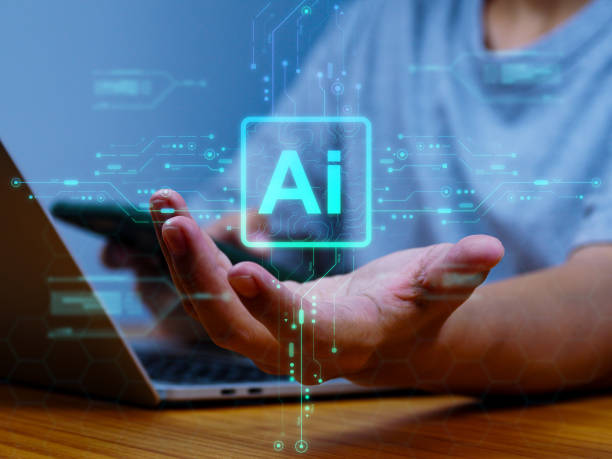
Every #AI robot, regardless of its specific application, consists of a set of core components.
These components include sensors, actuators, controllers, and artificial intelligence algorithms.
Sensors are responsible for collecting information from the surrounding environment.
This information can include visual data (through cameras), audio (through microphones), tactile (through pressure sensors), or information related to position and orientation (through GPS and IMU).
Actuators are components that allow the robot to move and interact with the physical environment.
These actuators can include motors, pumps, or other mechanical mechanisms.
Controllers are the thinking brain of the #AI robot and are responsible for processing information collected by sensors and sending commands to actuators.
Finally, artificial intelligence algorithms are responsible for decision-making and planning.
Using collected data and pre-determined knowledge, these algorithms determine how the #AI robot should act in different situations.
Proper selection and configuration of these components play a vital role in the robot’s performance and efficiency.
For example, an #AI robot designed to work in hazardous environments requires robust and durable sensors and actuators.
Machine Learning and its Role in the Development of AI Robots
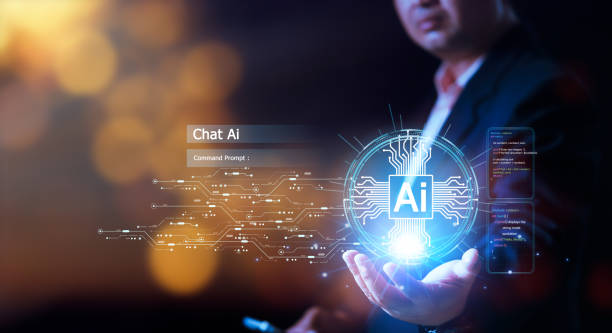
Machine Learning is a key subfield of artificial intelligence that plays a vital role in the development of #AI robots.
Machine learning allows robots to learn from data and improve their performance without explicit programming.
In other words, instead of programmers manually coding the required rules and algorithms, the #AI robot can analyze large amounts of data, identify existing patterns and relationships, and make decisions based on them.
There are different types of machine learning algorithms, each suitable for specific applications.
Supervised Learning, Unsupervised Learning, and Reinforcement Learning are among the most common of these algorithms.
In supervised learning, the #AI robot is trained using labeled data.
For example, to train an #AI robot to recognize objects, you can use labeled images where each image is labeled with the name of the object in it.
In unsupervised learning, the #AI robot is trained using unlabeled data.
This type of learning is useful for discovering patterns and hidden structures in data.
In reinforcement learning, the #AI robot learns how to act to receive more rewards by interacting with its environment and receiving rewards or penalties.
This type of learning is suitable for training #AI robots to perform complex and dynamic tasks.
| Machine Learning Type | Description | Applications in AI Robots |
|---|---|---|
| Supervised Learning | Training with labeled data | Object recognition, voice recognition, prediction |
| Unsupervised Learning | Training with unlabeled data | Clustering, dimensionality reduction, anomaly detection |
| Reinforcement Learning | Learning through interaction with the environment and receiving rewards | Robot control, navigation, game playing |
Applications of AI Robots in Various Industries
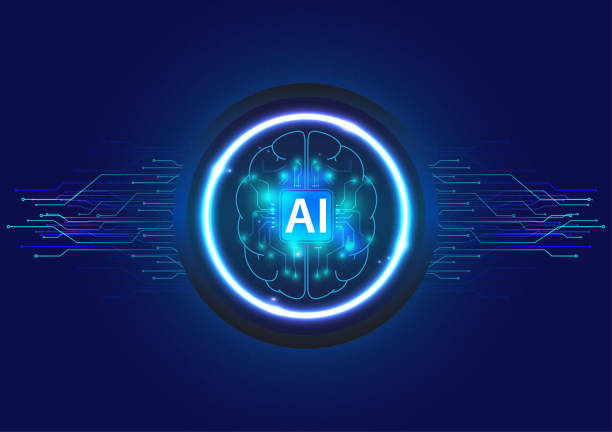
#AI robots are rapidly infiltrating various industries, creating remarkable transformations in them.
In the manufacturing industry, #AI robots are used to automate processes, improve product quality, and increase productivity.
These robots can perform tasks such as welding, painting, packaging, and assembly with greater accuracy and speed than humans.
In the field of healthcare, #AI robots are used to assist surgeons in performing complex operations, provide nursing services to patients, and develop new drugs.
These robots can perform surgery with greater accuracy than humans and reduce the risk of complications.
In the logistics industry, #AI robots are used to manage warehouses, deliver goods, and optimize routes.
These robots can move goods faster and more accurately than humans and reduce delivery times.
In addition, #AI robots have many applications in areas such as agriculture, education, customer service, and space exploration.
Is your online sales not what you expect? With Rasaweb, solve the problem of low sales and poor user experience forever!
✅ Increase visitor-to-customer conversion rates
✅ Create a pleasant user experience and increase customer trust
⚡ Take action now to receive a free consultation!
Challenges and Limitations of AI Robot Development
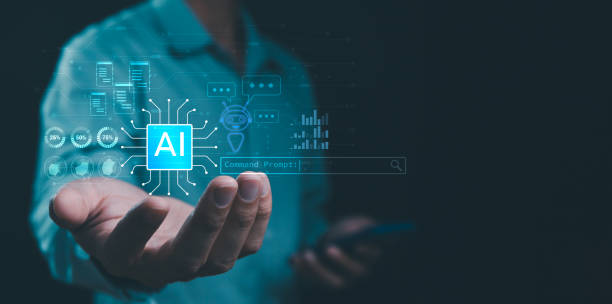
Despite significant advances in the field of #AI robots, there are still many challenges and limitations in the development and implementation of this technology.
One of the most important challenges is the high cost of developing and maintaining #AI robots.
The design, construction, and programming of these robots require significant expertise and resources.
Another challenge is the issue of security and privacy.
#AI robots are capable of collecting and processing vast amounts of data, which can be misused.
Therefore, appropriate security measures must be taken to protect this data.
In addition, ethical issues related to the use of #AI robots should also be considered.
For example, questions such as who is responsible for the decisions of the #AI robot and how to prevent these decisions from being discriminatory need to be carefully examined and appropriate laws and regulations developed.
Finally, technical limitations related to processing power, energy consumption, and reliability are also among the challenges facing the development of #AI robots.
The Future of AI Robots: Outlook and Possibilities

The future of #AI robots looks very bright and promising.
With continuous advances in artificial intelligence, robotics, and related technologies, #AI robots are expected to play an increasing role in everyday life and various industries.
In the future, we will see robots that are capable of performing more complex tasks and interacting with humans more effectively.
These robots can assist humans in areas such as elderly care, education, customer service, and crisis management.
In addition, #AI robots can play a key role in space exploration, scientific research, and the development of new technologies.
However, it is necessary for the development of #AI robots to be carried out taking into account ethical, social, and economic issues in order to fully benefit from the advantages of this technology and prevent its potential risks.
Ethical and responsible use of this technology can bring greater welfare and comfort to human societies.
Overview of Types of Sensors and Their Applications in AI Robots
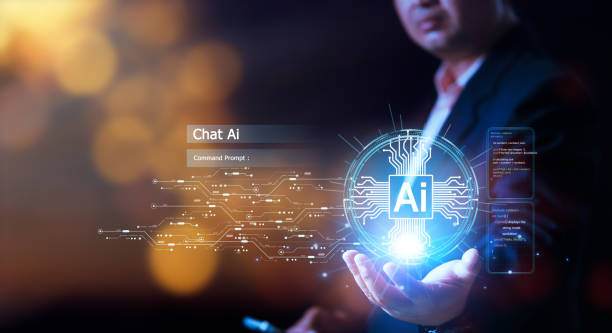
Sensors play a vital role in the operation of #AI robots, as they allow the robot to collect information from the surrounding environment.
There are different types of sensors, each designed to collect a specific type of information.
Vision sensors (such as cameras) allow the robot to see the surrounding environment and recognize objects.
Audio sensors (such as microphones) allow the robot to hear sounds and understand voice commands.
Tactile sensors (such as pressure sensors) allow the robot to interact with physical objects and sense force and pressure.
Position sensors (such as GPS and IMU) allow the robot to determine its position and orientation in space.
The appropriate selection of sensors depends on the specific application of the #AI robot.
For example, an #AI robot designed for self-driving requires vision sensors, lidar, and radar to fully understand the surrounding environment.
| Sensor Type | Description | Applications in AI Robots |
|---|---|---|
| Vision Sensor (Camera) | Collecting visual information from the environment | Object recognition, navigation, face recognition |
| Audio Sensor (Microphone) | Collecting audio information from the environment | Voice recognition, understanding voice commands |
| Tactile Sensor (Pressure Sensor) | Detecting contact and pressure with objects | Gripping, interaction with the environment |
| Position Sensor (GPS and IMU) | Determining position and orientation in space | Navigation, mapping |
Review of Programming Languages and Tools Used in Artificial Intelligence Robotics

The development of #AI robots requires the use of specific programming languages and tools that allow programmers to implement artificial intelligence algorithms and control the robot.
Python is one of the most popular programming languages for developing #AI robots, as it has powerful libraries such as TensorFlow, PyTorch, and OpenCV, which are used for machine learning, computer vision, and image processing.
C++ is also another widely used programming language that, due to its high speed and efficiency, is suitable for controlling robots in real-time.
MATLAB is also a powerful tool for modeling, simulating, and controlling robotic systems.
In addition, software frameworks such as ROS (Robot Operating System) are also used to facilitate the development and integration of robotic systems.
The choice of programming language and appropriate tools depends on the type of project and its specific needs.
Understanding the basic concepts of artificial intelligence and robotics, along with mastering these tools, is essential for developing #AI robots.
Are you worried about losing customers who don’t have a professional online store site?
Forget these concerns with online store site design by Rasaweb!
✅ Significant increase in sales and visitor-to-customer conversion rate
✅ Professional and user-friendly design that builds customer trust
⚡ Get a free consultation from Rasaweb
Case Study of AI Robot: Industrial Robots

Industrial robots are one of the most important applications of #AI robots in today’s world.
These robots are used in factories and production lines to perform repetitive, dangerous, or high-precision tasks.
Industrial robots equipped with artificial intelligence are capable of performing tasks such as welding, painting, packaging, and assembly with greater accuracy and speed than humans.
In addition, these robots can improve their performance and adapt to new conditions by learning from data.
For example, an #AI robot designed to weld car parts can automatically adjust welding settings based on the type of part and environmental conditions using machine learning algorithms.
The use of intelligent industrial robots leads to increased productivity, reduced costs, and improved product quality.
These robots are able to automate complex processes and minimize human errors.
For example, in a car production line, the #AI robot can significantly increase the quality and speed of production by accurately detecting the position of parts and performing the welding process in a fully coordinated manner.
Key Points in Designing and Implementing AI Robots
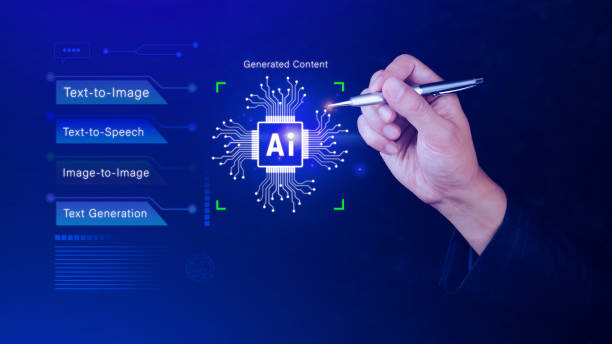
Designing and implementing #AI robots is a complex and multifaceted process that requires attention to many key points.
The first point is the precise definition of project goals and requirements.
Before starting the design, it must be clearly specified what tasks the #AI robot is intended to perform and what requirements it should meet.
The second point is the appropriate selection of hardware and software components.
The appropriate components should be selected according to the project goals and budget constraints.
The third point is designing a suitable architecture for the robot control system.
The control system must be able to process information collected by sensors, make decisions, and send commands to actuators.
The fourth point is the development of appropriate artificial intelligence algorithms.
Algorithms must be capable of learning, reasoning, and problem-solving.
The fifth point is accurate testing and evaluation of robot performance.
Before deploying the robot in the real environment, its performance must be fully tested and evaluated.
By following these key points, an efficient and reliable #AI robot can be designed and implemented.
Frequently Asked Questions
| Row | Question | Answer |
|---|---|---|
| 1 | What is an AI robot? | An AI robot is a machine capable of understanding, reasoning, learning, and problem-solving, and can perform complex tasks with relative autonomy. |
| 2 | What are the most important applications of AI robots? | The main applications include industrial manufacturing, customer service (chatbots), medicine and surgery, self-driving transport, space exploration, and military affairs. |
| 3 | What is the main difference between an AI robot and a regular robot? | A regular robot only follows programmed instructions, while an AI robot can learn from data, make decisions, and adapt to new environments. |
| 4 | How do AI robots learn? | They identify patterns and improve their performance through machine learning algorithms (such as deep learning, reinforcement learning) and processing vast amounts of data. |
| 5 | Can AI robots have emotions? | Currently, AI robots do not have real emotions in the human sense. They can mimic or recognize emotions, but they do not understand or experience them. |
| 6 | What are the current limitations of AI robots? | Limitations include the need for large amounts of data, the inability to understand abstract concepts, the lack of real creativity, ethical issues, and challenges of generalizability in new environments. |
| 7 | What is the role of artificial intelligence in the development of humanoid robots? | Artificial intelligence helps humanoid robots walk, maintain balance, understand their surroundings, interact with humans, and perform complex tasks. |
| 8 | How is the future of AI robots predicted? | AI robots are predicted to become smarter, more autonomous, and capable of performing more complex tasks in daily life and industry, and their interaction with humans will increase. |
| 9 | Can AI robots replace all human jobs? | It is unlikely that all human jobs will be replaced. Robots take over many repetitive and dangerous tasks, but jobs that require creativity, empathy, and ethical judgment will remain. |
| 10 | What ethical and social challenges arise with the expansion of AI robots? | Challenges include issues related to privacy, data security, ethical decision-making by robots, impact on employment, and accountability in case of errors. |
And other services of Rasa Web advertising agency in the field of advertising
Intelligent direct marketing: a dedicated service for growth of campaign management based on intelligent data analysis.
Intelligent SEO: professional optimization for online growth using key page optimization.
Intelligent content strategy: a combination of creativity and technology for campaign management by using real data.
Intelligent digital advertising: transform sales increase with the help of customizing the user experience.
Intelligent direct marketing: an effective tool for campaign management with the help of designing an attractive user interface.
And more than hundreds of other services in the field of internet advertising, advertising consulting and organizational solutions
Internet Advertising | Advertising Strategy | Advertorial
Resources
Robotics for Dummies
,What is an AI Robot?
,Basic Robotics Training – Basic Concepts
,What is AI Robotics? All About Smart Robots
? Rasaweb Afarin, specializing in digital marketing solutions, gets your business to its goals. We are the best partner for your success in the digital world in the field of WordPress website design, SEO optimization, social media management, and online advertising campaigns. Contact us today for a free consultation and to learn about our services!
📍 Tehran, Mirdamad Street, next to the Central Bank, South Kazerun Alley, Ramin Alley No. 6

